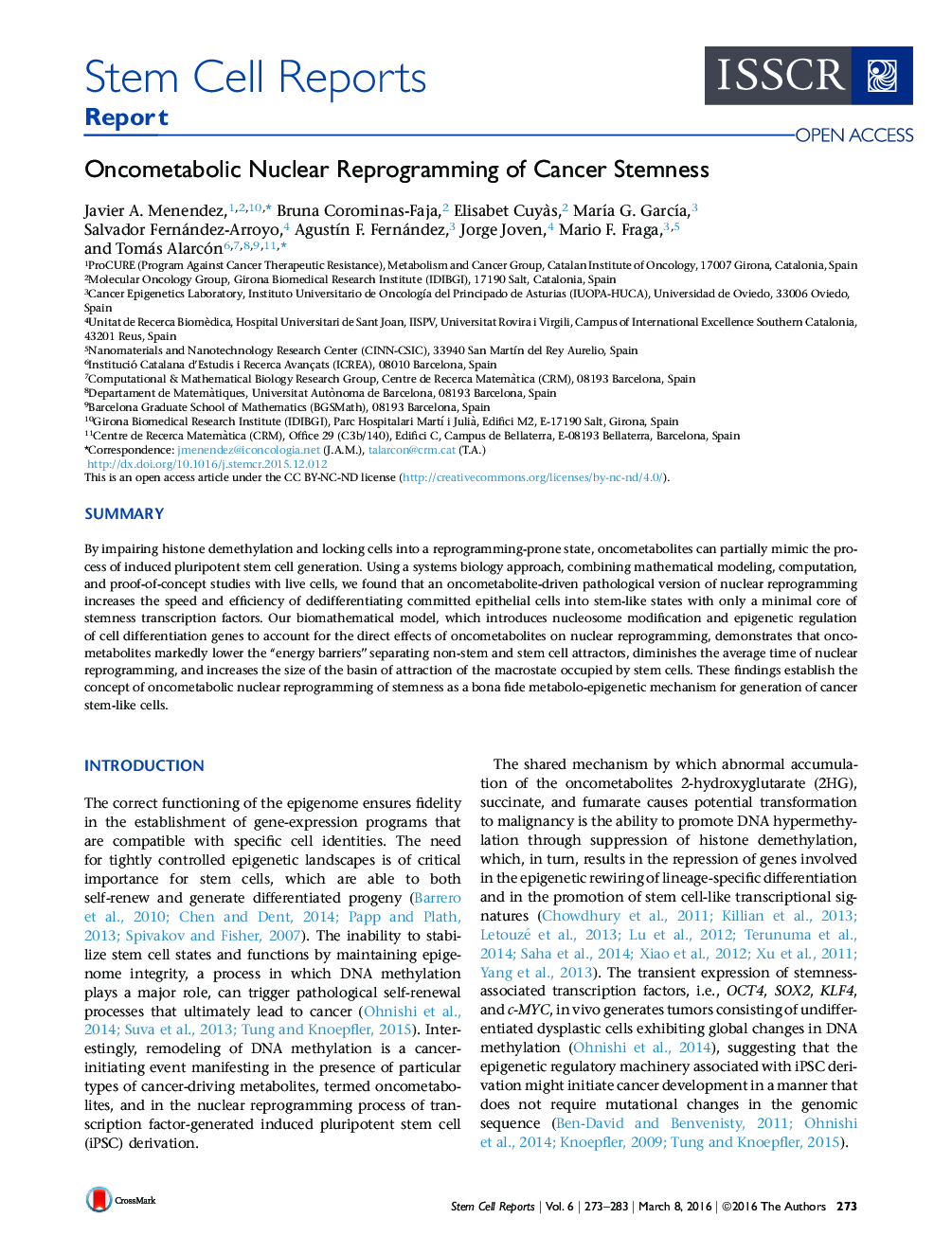| Article ID | Journal | Published Year | Pages | File Type |
|---|---|---|---|---|
| 2093302 | Stem Cell Reports | 2016 | 11 Pages |
•Oncometabolites facilitate the reprogramming process evoked by stemness factors•Oncometabolites lower the epigenetic barriers to nuclear reprogramming•Cancer stem-like states arise through oncometabolic nuclear reprogramming phenomena•Oncometabolic regulation of epigenetics can drive stemness in cancer tissues
SummaryBy impairing histone demethylation and locking cells into a reprogramming-prone state, oncometabolites can partially mimic the process of induced pluripotent stem cell generation. Using a systems biology approach, combining mathematical modeling, computation, and proof-of-concept studies with live cells, we found that an oncometabolite-driven pathological version of nuclear reprogramming increases the speed and efficiency of dedifferentiating committed epithelial cells into stem-like states with only a minimal core of stemness transcription factors. Our biomathematical model, which introduces nucleosome modification and epigenetic regulation of cell differentiation genes to account for the direct effects of oncometabolites on nuclear reprogramming, demonstrates that oncometabolites markedly lower the “energy barriers” separating non-stem and stem cell attractors, diminishes the average time of nuclear reprogramming, and increases the size of the basin of attraction of the macrostate occupied by stem cells. These findings establish the concept of oncometabolic nuclear reprogramming of stemness as a bona fide metabolo-epigenetic mechanism for generation of cancer stem-like cells.
Graphical AbstractFigure optionsDownload full-size imageDownload as PowerPoint slide
